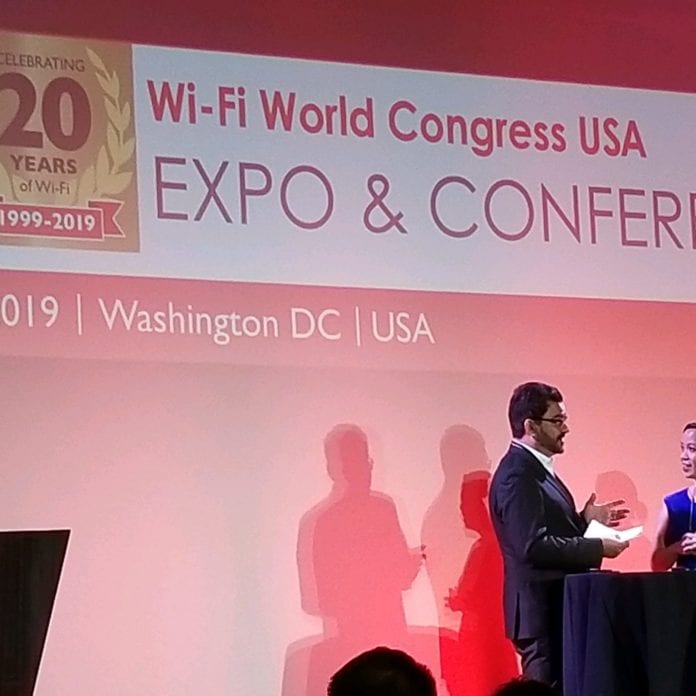TYSONS CORNER, Virginia–Fixed wireless broadband provider Starry plans to launch its service in an additional 17 cities, in addition to the service it provides in New York City, Boston, Massachusetts; Denver, Colorado; and Los Angeles, California.
Starry uses 802.11-based technology (which it calls 5G) to provide its service. It offers symmetrical speeds of 200 Mbps for $50 per month. Its most recent launch was in Denver in April, and the company claims to have 1.5 million potential customers covered.
Starry Senior Vice President Virginia Lam Abrams said during a session at Wi-Fi Now’s Wi-Fi World Congress that the company’s customers are cord cutters who only want broadband, not bundled services, and they “are all very heavy data users.” The average subscriber uses 350 gigabytes of data per month, she said, with the top 1% of Starry users going through a terabyte of data per month.
Those numbers, she said, “are only increasing, quarter over quarter.” Most of the usage is for over-the-top video streaming, Lam Abrams said, but she also noted that 85% of Starry’s customers spend (average age: 36) at least five hours a week working from home and utilizing technology such as video conferencing and large file transfers, which also drives data usage.
The company has grown from around 100 employees to about 500 in the past few years, Lam Abrams said, and as it has grown, it has decided to focus on helping to bridge the digital divide between. She said that after surveying the existing offerings, Starry concluded that even “affordable” broadband services were too expensive for many potential customers, and often offered speeds that weren’t even considered basic broadband while requiring that people jump through many bureaucratic hoops in order to qualify.
So Starry launched Starry Connect, a program through which it partners with public and affordable housing owners to connect their buildings and offer internet service for as low as $15 per month — or even free, as in a pilot project in Boston.
Lam Abrams differentiated between Starry’s network, calling it “a completely different deployment” compared to small cells deployed in the public right-of-way, on street-level furniture or light poles. Starry utilizes spectrum at 37-40 GHz, with a “Starry Beam” base station node installed at a height of at least 100 feet that broadcasts to a “Starry Point” on individual buildings and serves “Starry Stations” in units within those buildings, or its Starry Home product for single family homes. Starry, she said, can cover a city with its high-speed offering with just one dozen to two dozen base station sites — and the relatively small number of sites is reassuring to would-be users or local authorities concerned about the amount of equipment being deployed.

